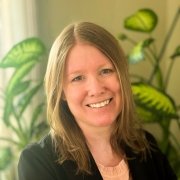Mastering Adaptive Teaching in the Midst of COVID-19
MedEdPearls April 2020: This MedEdPearl highlights strategies for maintaining teacher, social and cognitive presence in a virtual learning environment.
The current coronavirus outbreak is forcing all educators to rapidly adapt to a new method of teaching - online. While many educators may have mastered their teaching domains in the classroom, virtual teaching will certainly challenge their mastery of adapting to this new learning environment. With the help of faculty development colleagues, we can remain nimble during times of rapid transition. How do we as medical educators stay resilient and step courageously into this unfamiliar territory?
This #MedEdPearl highlights strategies for maintaining teacher, social and cognitive presence in a virtual learning environment.
- Maintain Teacher Presence
- Connect with students via web conferencing apps such as Zoom, Skype, Google+ Hangout, YouTube Live or Microsoft Teams.
- Minimize email communication with students by establishing office hours via your institution’s learning management system, Google chat, Twitter or web conferencing.
- Maintain Social Presence
- Don’t downplay the truth or risks of COVID-19.
- Start every session with an activity to lower stress, such as having students in the virtual environment stand on their non-dominant leg for 30 seconds and talk about balance as a sixth sense.
- Create safe spaces to talk about concerns and reach out to students who seemingly disengage in the move to virtual learning.
- Maintain Cognitive Presence
- Consider the pandemic as a teaching opportunity and include learning material linked with the virus.
- Organize and facilitate small group discussions using any of the above mentioned apps, or through WhatsApp, which supports ongoing conversations on multiple devices.
- Consider alternative assessment formats to multiple choice tests, such as live demonstrations, simulations, or presentations.
To see additional strategies and resources other learning institutions are developing to support this move to online instruction, visit the EDUCAUSE website.
What strategies do you find successful when teaching in a virtual environment? Share your ideas via Twitter at #MedEdPearls!
About the MedEdPearls Author

Leah Sheridan
PhD
- Professor, Northeast Ohio Medical University
- Associate Dean for Medical Education, Northeast Ohio Medical University
- Jean Bailey, PhD – Virginia Commonwealth University School of Medicine
- Carrie Bowler, EdD, MS, MLSCM (ASCP) – Mayo Clinic School of Continuous Professional Development
- Kristina Dzara, PhD, MMSc (Educators ’16; Assessment ’16; HCE 2.0 ’17) – Saint Louis University School of Medicine
- Shanu Gupta, MD, SFHM – University of South Florida Morsani College of Medicine and Tampa General Hospital
- Jennifer Hillyer, PhD – Northeast Ohio Medical University
- Larry Hurtubise, PhD, MA (HCE 2.0 '16) – The Ohio State University
- Anna Lama, EdD, MA – West Virginia University School of Medicine
- Machelle Linsenmeyer, EdD, NAOME (Assessment ’07) – West Virginia School of Osteopathic Medicine
- Skye McKennon, PharmD, BCPS, ACSM-GEI – Washington State University Elson S. Floyd College of Medicine
- Rachel Moquin, EdD, MA – Washington University School of Medicine
- Stacey Pylman, PhD – Michigan State University College of Human Medicine
- Leah Sheridan, PhD – Northeast Ohio Medical University
- Lonika Sood, MBBS, MHPE – Washington State University Elson S. Floyd College of Medicine
- Mark Terrell, EdD – Lake Erie College of Osteopathic Medicine
- Stacey Wahl, PhD – Virginia Commonwealth University School of Medicine
Harvard Macy Institute
Harvard Macy Institute
The Harvard Macy Institute educates, connects, and serves health care leaders around the globe by providing advanced faculty development programs, thought leadership, and impactful networking opportunities.
6 Programs

